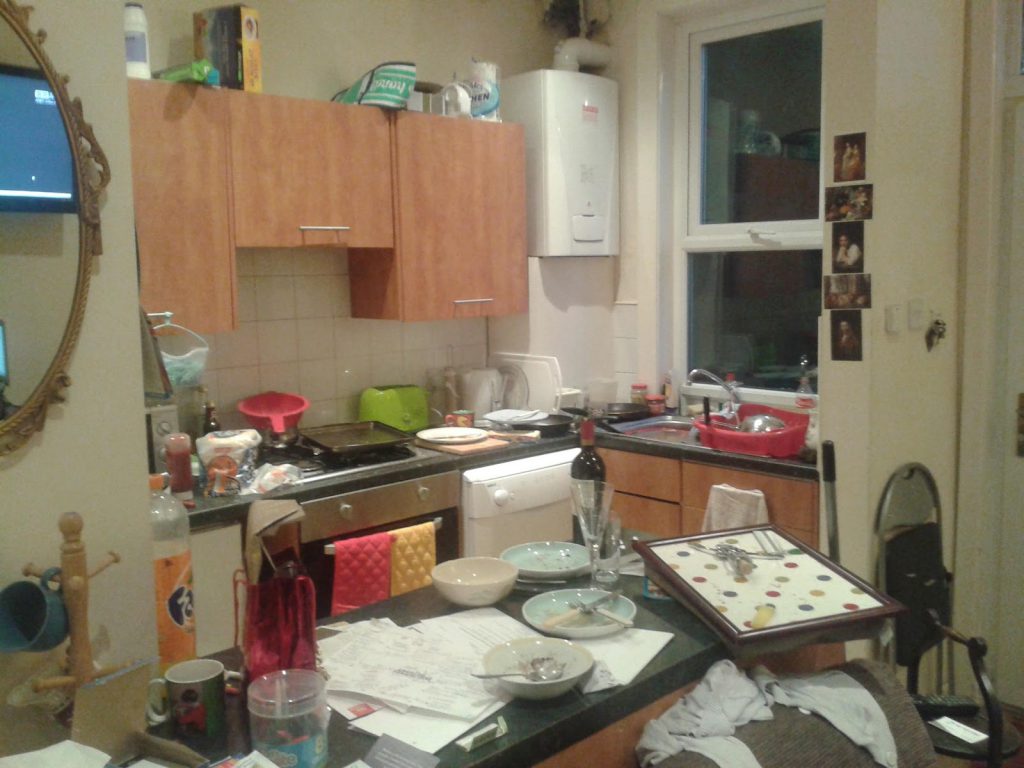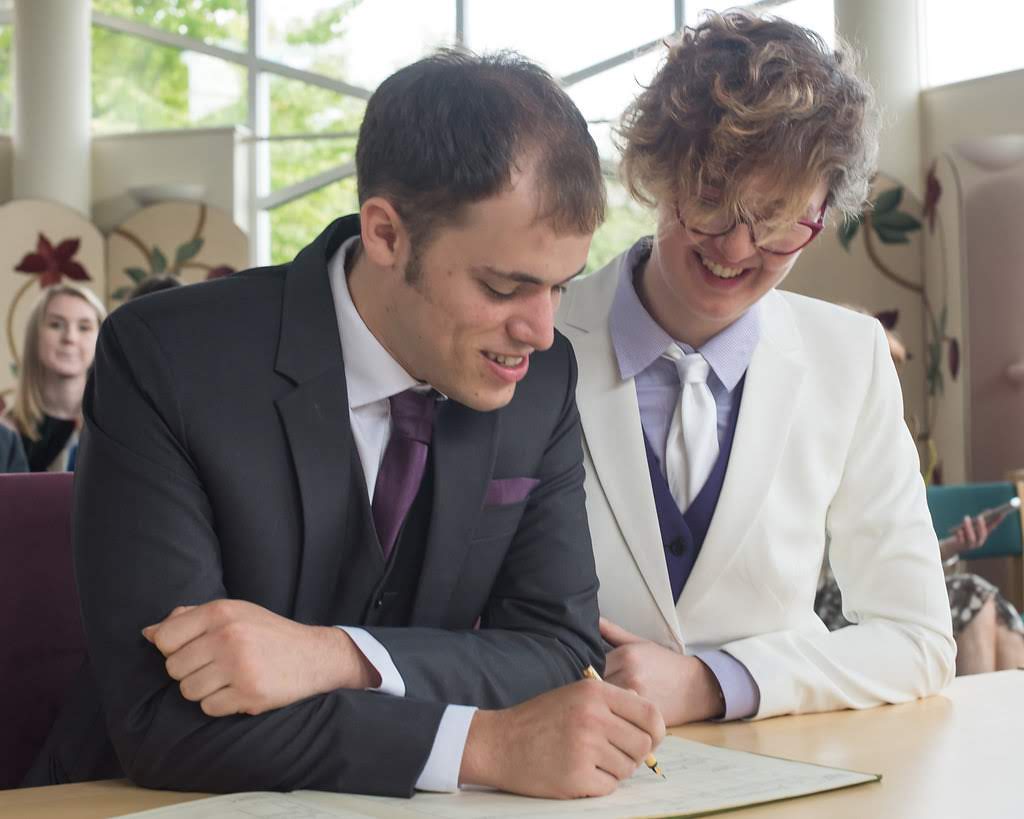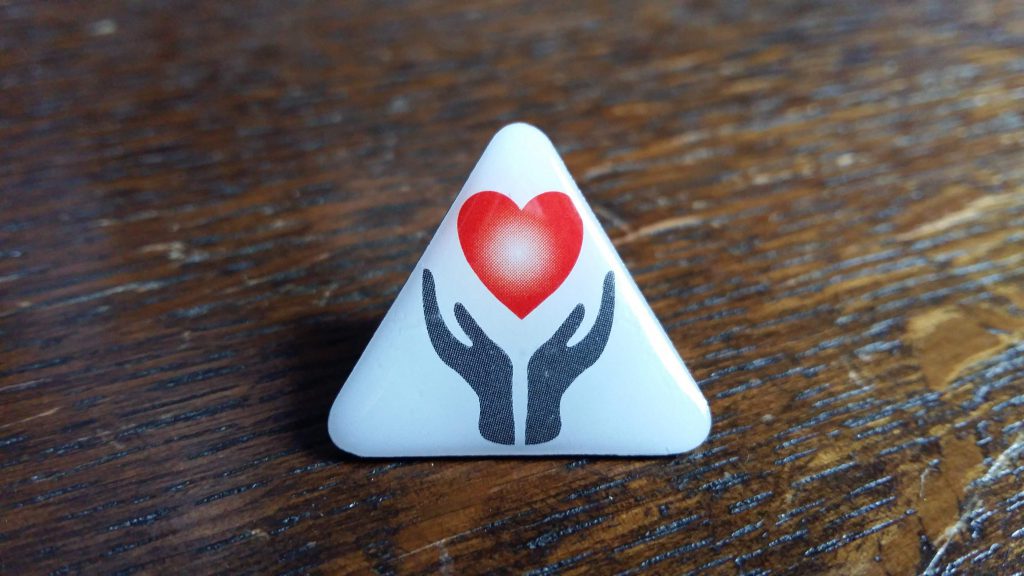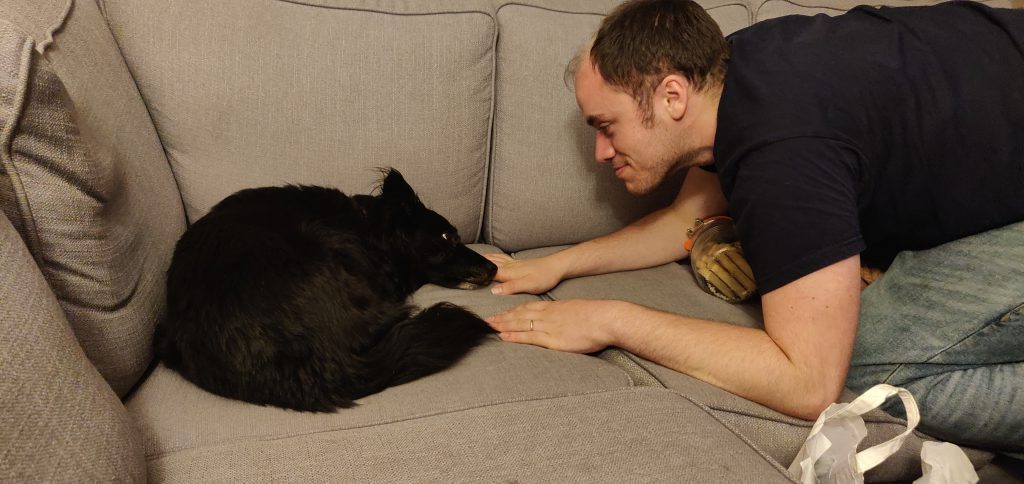
Why we use Home Scrum
Once you know the difference that it has made in our lives, it is easy to see why we use Home Scrum.
A day in the life (now)
My husband Francis gets home at 4:30pm and comes straight upstairs to see me. He started early today; he was up at 4:30am in order to set up the ambulance before his 6am shift. He is wearing the classic ‘green pyjamas’ uniform of the NHS emergency services, with a watch and ID tag hanging from his belt and all sorts of useful tools tucked into the trousers’ many pockets. The dog goes wild on his return and Francis makes a fuss of her. We exchange stories about our days (his are always more interesting than mine) before he goes to change.
I finish my coding work within an hour or two and find Francis downstairs, ensconced in front of a video game. He suggests getting a take-away for dinner but tonight we manage to resist that siren call and make oven pizza. It’s not particularly nutritious, but tomorrow Francis has a day off, and he will cook us a curry from scratch.
We eat in front of videos from our latest chosen YouTube channel before challenging each other to a ‘Beat Saber-off’. This involves flailing our arms around in time to a song, in a very similar manner to a dance-mat, but in virtual reality. Before we know it, it is past 10pm. I reluctantly leave Francis to perfect his Beat Saber reflexes while I do the washing up, listening to an audio book. Our house is generally in a state of some disarray—the dog sheds fur faster than our cleaning could ever keep up with, and we still haven’t properly refurbished since we moved in seven years ago—but this one act of putting the kitchen to rights each night has gone a long way towards giving us a sense of control, and lets Francis cook us delicious meals whenever the mood strikes him.
By now, it is pushing 11pm and I suggest that we do our Daily Scrum. Francis dutifully relinquishes the VR headset and we turn to the enormous cork-board taking up most of the wall-space in our living room. It is covered in small scraps of paper, in yellow, green, blue, pink, and white, all divided into rough columns and rows like a deranged spreadsheet brought to life. We know it well, though, and get busy moving the paper tasks from the ‘Today’ column to the ‘Done’ column. I discover that Francis took the bins out for us and thank him profusely; he finds out that I made a call to sort out a dog-training lesson for next week. The board shows that the task for ‘Feed dog’ (orange) is currently in my row, so I do that while Francis quickly fulfils his ‘Play guitar’ task. We add these last-minute tasks into ‘Done’ and swiftly count up our points. These go towards moving little avatars of ourselves further along a paper road along the bottom of the board. If we don’t get enough points each day, the picture of a flower-monster will catch up and eat our poor avatars.
With that serious business settled, we quickly rehome all the tasks from the ‘Done’ column. Some go back to ‘Today’ if they are a repeating task; some get taken to the ‘Done Done’ column for later review; some get pinned to a certain day on the massive homemade whiteboard-calendar on the next cork board along. With our plans for tomorrow sorted, I bolt upstairs to brush my teeth and get to bed just in time; I have a ‘streak’ on the board for getting to bed by 11pm each night and I don’t want to lose it. Francis follows at a more leisurely pace. His natural inclination is to stay up until at least 2am, but today he’s been up for eighteen hours already and he is plenty ready to sleep.
A day in the life (then)
Life used to be far more chaotic for Francis and me. One particular low point stands out from 2013, during our first year of living together, when we were in our early twenties. You would have found us both lying on our narrow double bed in a sub-par rental house, crying together as we tried to absorb the hurt of Francis losing his fourth driving instructor. He had missed the start of a couple of sessions, but this time he had missed one entirely. We were both staying up too late and oversleeping regularly, and Francis in particular had a very loose grasp of which obligations and appointments were about to ambush him next.
I was still surprised this driving instructor had dropped him. She taught me how to drive and I liked her a lot, and we paid for the missed lesson in full. I even went so far as to explain via text that Francis has Attention Deficit Hyperactivity Disorder (ADHD), and that keeping track of time is the main thing he struggles with because of it. But even this outright begging had no effect, and in that moment, both of us felt overwhelmed with ever making anything of our adult lives. Our house was constantly filthy and that wasn’t just Francis, it was me too. But I knew from my reading that partners of people with ADHD often fell into the trap of taking on the running of the whole household, and then resenting it, and being resented right back because of all the nagging and micro-managing required. It seemed marginally more equal to let things slide, and then at least neither of us put in an unfair amount of effort. But I wasn’t coping well with the move into adult life either, with a minimum-wage admin job and no idea at all about how we were going to move forward together and learn to meet life’s demands.

Francis and I tried a lot of different ways to get things done. We were both struggling to meet our responsibilities, but at least my chronic perfectionistic anxiety had given me a veritable arsenal of planning tools. I thought that I, of all people, would be able to hit upon an ADHD-friendly system that could contain all our daily and long-term tasks and help us move forward. Well, I tried to find (or come up with) that system for five years, and failed.
Eventually, I more or less gave up on helping Francis to sort his life out. To have any hope at all, I had to help myself first. I spent a couple of years hunting for a career I might like. Eventually, I found the idea of becoming a web developer and started to teach myself to code. Little did I know that I had set us on the path to stumbling across an unlikely salvation: Scrum.
The difference Scrum has made
We’ve now been using Scrum for nearly five years, with a few long-ish breaks, and it has massively helped us to improve the course of our lives.
At first, it helped us to stabilise our housework. We missed fewer bin days. We kept up with the laundry better. Already, this was a good step forward for our quality of life.

Secondly, Francis used Scrum as a supporting framework when he quit smoking. He started looking into a possible career in the military, and although that didn’t pan out, the fact that we had got as far as applying and realising that he would never be accepted based on his ADHD and previous injuries at least let Francis rule it out in his mind, and that might never have happened otherwise.
We arranged to have a pre-wedding honeymoon in Vietnam, and to put this in context, before that, the furthest we’d gone for a holiday together was camping in a seaside town a couple of hours away. In fact, when we first got together Francis professed his complete disinterest in world travel, due entirely to the stress and complexity of arranging the logistics of it. But with Home Scrum we broke it down into small enough steps that we could tackle it, and even share the work.
Next came our wedding. Wedding planning is the bane of any person with ADHD; without Scrum, Francis and I doubt he would have been able to do with more than five percent of it, no matter how willing he was to help. With Scrum, that was more like thirty percent: not perfect, but much more than many men often contribute, and enough to feel like we were a team while approaching the stressful logistics of it all.


Probably the biggest coup-de-grace was yet to come: Francis landed a job as an Emergency Care Assistant (essentially an assistant paramedic) with the Yorkshire Ambulance Service. This involved over a year of volunteering first, and then the whole application, interview, and training process, all of which involved more preparation and long-term follow-through than Francis would ever have realistically been able to muster before Scrum.


Since Francis started his new job, he has had much less need for the Scrum system to structure his life and achieve his goals, so we have not used it as much in the last couple of years. However, we have recently brought it back with renewed vigour, more to help me cope with working from home, and to tackle the whole-house redecoration project with which we are currently embroiled.
All in all, Home Scrum still serves us, and we find that without it we both begin to slip into a more chaotic and worried existence. We use it to maintain a reasonable level of control over our lives and to give Francis a sense of direction and autonomy about the future (which is always preferable to constant dread). Francis describes life before Scrum as like drifting on a raft in the ocean, constantly buffeted by unforeseen waves and with no sense of direction to get himself out of there. Scrum didn’t fix everything, but it gave him a paddle and a compass—some way of beginning to help himself improve his circumstances. It doesn’t make life that much easier to deal with, but there is at least a point to striking out for a distant shore and aiming for more than just survival. Having never had any reason to trust himself before, Scrum has provided Francis with a measure of confidence in his ability to shape his own future that he has never had before. (I think this is one of the more unseen difficulties of living with ADHD, and one that medication by itself cannot necessarily solve.) With this new, fragile foundation of confidence, we are able to lead richer, calmer, and more fulfilling lives.

Home Scrum and you
My hope is that Scrum can allow more people like Francis and me to experience a calmer and more confident existence, knowing that you are not about to get caught out by life and that you can get to where you want to go. I hope it allows a way for people to help each other to stay on track with their goals, rather than just having to watch a friend or loved one struggle to cope. I think Home Scrum can provide the environmental infrastructure that forms the non-medication side of treatment for various neurodivergent conditions. It is a simple system really, and I don’t want you to hesitate about not knowing every detail before grabbing another person, a bit of wall-space, and getting started. I hope you get what you want out of it, and if you feel like sharing any success or struggles with other readers on the sub-Reddit or Slack then we would love to hear about it. Good luck!







